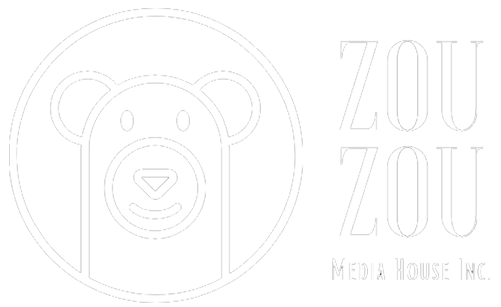Crafting A Compelling Children’s Book: The Power of Story Structure and How to Map Your Story
Writing a children’s book may seem simple at first glance, but crafting a truly engaging story for young readers requires careful planning, creativity, and a strong understanding of story structure. Whether you're writing a picture book, early reader, or middle-grade novel, the key to success lies in creating a story that’s both captivating and age-appropriate.
In this blog, we’ll explore the essentials of story structure for children’s books and provide you with step-by-step strategies to map out your next masterpiece. By the end, you’ll be ready to bring your ideas to life.
Why Story Structure Matters in Children’s Books
Children’s books have unique requirements. Unlike novels for adults, they must be concise, engaging, and easily digestible for young minds. Story structure ensures your book:
Holds the attention of easily distracted readers.
Creates a satisfying emotional journey.
Leaves a memorable impact that resonates with children (and often their parents).
From picture books with 500 words to longer middle-grade novels, every children’s story benefits from a solid structure.
The Elements of a Strong Children’s Story
Before diving into the steps to map out your story, let’s look at the key elements that make children’s books successful:
Relatable Characters:
Kids love protagonists they can identify with—whether it’s a curious child, a talking animal, or a fantastical hero.
Your main character should face a relatable problem or challenge.
Clear and Simple Plot:
Children’s books often follow a straightforward narrative with a clear beginning, middle, and end.
Avoid overly complex subplots.
Themes and Messages:
Every great children’s book imparts a subtle life lesson or moral (e.g., kindness, perseverance, or self-acceptance).
Engaging Language:
For younger readers, use rhythmic or repetitive phrasing.
For middle-grade books, aim for vivid descriptions and age-appropriate dialogue.
Step-by-Step Guide to Mapping Out Your Children’s Book
1. Start with a Big Idea
The best children’s books start with a “what if” question or a problem that resonates with your target age group.
Example:
Picture Book: "What if a shy elephant had to speak up to save her friends?"
Middle-Grade Novel: "What if a boy discovered his grandmother’s cookie recipe held the secret to time travel?"
2. Choose the Right Structure
For children’s books, simplicity is key. Most follow a basic story arc:
Beginning: Introduce the main character, setting, and problem.
Middle: Show the character trying to solve the problem, facing challenges or conflicts.
End: Resolve the problem in a satisfying way that reflects the story’s theme.
For middle-grade novels, you might use a slightly more complex structure, such as the Three-Act Structure or The Hero’s Journey.
3. Know Your Audience
Different age groups have different needs:
Picture Books (Ages 2–6): Short, simple stories with 500–700 words. Focus on visuals and rhythm.
Early Readers (Ages 5–8): Slightly longer stories with easy-to-read sentences and simple chapters.
Middle Grade (Ages 8–12): More complex plots and character development. Explore themes like friendship, self-discovery, or overcoming fears.
Tailor your language, themes, and structure to your audience.
4. Develop a Strong Main Character
Your protagonist is the heart of your story. In children’s books, the main character should:
Reflect on the age of your readers (kids relate to characters close to their own age).
Have clear goals, strengths, and flaws.
Grow or change by the end of the story.
Example: In The Gruffalo by Julia Donaldson, the clever mouse overcomes his fears and tricks predators with his wit—a relatable and empowering journey for young readers.
5. Outline the Key Moments
No matter the length of your children’s book, plan your story's main beats. Here’s a template:
Beginning:
Introduce the main character and their world.
Present the problem or goal.
Example: A young rabbit wants to join the annual carrot race but feels too small to compete.
Middle:
Show the character facing challenges and trying to solve the problem.
Include fun or imaginative obstacles.
Example: The rabbit practices with her friends but gets discouraged after losing to bigger competitors.
End:
Resolve the story with a satisfying conclusion.
Ensure the protagonist achieves growth or learns a valuable lesson.
Example: The rabbit uses her speed and clever thinking to win the race, proving that size doesn’t matter.
6. Incorporate Conflict and Resolution
Every good story has a conflict that drives the plot forward. In children’s books, this doesn’t have to be intense—it could be as simple as a lost toy, a misunderstanding, or a tricky decision.
Tips for Conflict:
Keep it age-appropriate and relatable.
Resolve it in a way that aligns with the story’s theme.
Avoid overly scary or upsetting scenarios.
7. Infuse Creativity and Magic
Children love stories that ignite their imagination. Consider:
Talking animals, magical objects, or fantastical worlds.
Fun twists or unexpected outcomes.
Humor, whether it’s silly dialogue or playful scenarios.
Example: In Don’t Let the Pigeon Drive the Bus! by Mo Willems, the humor and interactive storytelling captivate young readers.
8. Write a Scene List
For picture books, this might mean mapping out 12–14 key scenes that align with your illustrations. For middle-grade novels, break your story into chapters with clear purposes.
Picture Book Example:
The elephant feels too shy to trumpet her warning.
Her friends face danger.
She gathers courage and saves the day.
Middle-Grade Example:
A boy finds an old recipe in his grandmother’s attic.
He accidentally bakes cookies that send him back in time.
He discovers secrets about his family and must make a choice.
9. Decide on the Ending
Children’s books often have happy or hopeful endings, but they don’t need to feel overly perfect. Tie the resolution to the character’s growth and the lesson you want to convey.
10. Pair Text with Illustrations
For picture books, remember that illustrations play a vital role. Leave space in your manuscript for visual storytelling, and consider working with an illustrator who can bring your words to life.
Tip: Use a "32-page spread" template to plan how text and images will flow.
Tools and Resources for Writing Children’s Books
Writing Software:
Scrivener: For organizing drafts and outlines.
Reedsy Book Editor: Great for formatting picture books.
Storyboard Templates:
Use visual templates to map out scenes and illustrations.
Read Aloud:
Children’s books should flow naturally when read aloud. Practice to ensure rhythm and pacing.
Common Pitfalls to Avoid
Preaching Instead of Showing: Let the story subtly convey its lesson.
Too Much Text: Keep it concise—especially for younger readers.
Overcomplicating: Simplicity is key in children’s storytelling.
How ZouZou Media Can Help
At ZouZou Media, we understand the unique challenges of writing children’s books. Our services include:
Story Development: Refine your concept and outline to create a strong foundation.
Editing and Feedback: Polished prose and expert advice to make your story shine.
Illustrator Pairing: We can connect you with talented illustrators to bring your vision to life.
Whether you’re crafting your first picture book or tackling a middle-grade novel, we’re here to guide you every step of the way.
Start Your Children’s Book Journey Today
Writing a children’s book is an exciting and rewarding endeavour. By following these steps and embracing the power of story structure, you can create a story that delights young readers and stands the test of time.
When you’re ready to bring your story to life, connect with one of our publishing project managers at Zou Zou Media House. Together, we can make magic for young readers!

